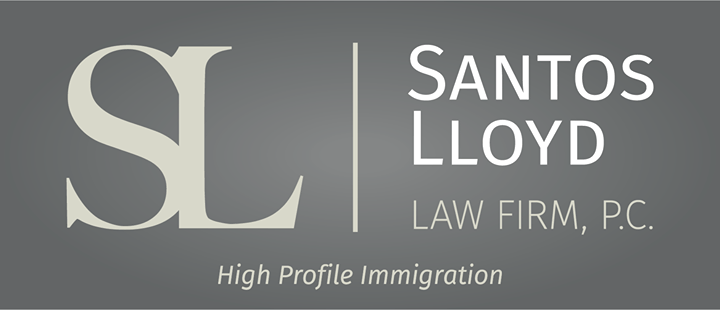Centre régional ou investissement direct pour votre demande EB-5 ?
Kyle Huffman • August 8, 2024
Click here to read this article in English
Alors que les effets de la loi EB-5 Reform and Integrity Act of 2022 continuent de se développer, cette catégorie de visa d'immigrant a vu sa popularité monter en flèche au cours des derniers mois. Avant 2022, de nombreuses personnes fortunées évitaient complètement la catégorie EB-5, en raison de l'incertitude généralisée qui entourait le programme. Ce n'est un secret pour personne que la catégorie EB-5 est coûteuse, et qui pourrait reprocher à un investisseur d'hésiter à placer une somme aussi importante dans un véhicule d'investissement dont le contrôle et la transparence sont limités ? La grande majorité des préoccupations relatives au programme ayant été apaisées par les dispositions de la loi de 2022 sur la réforme et l'intégrité de l'EB-5 (EB-5 Reform and Integrity Act), qui permettent une plus grande surveillance réglementaire, un relèvement des seuils d'investissement, la transparence et même la suppression des lourdeurs administratives, les investisseurs sont à nouveau désireux de participer à ce programme hautement bénéfique.
Si vous envisagez un investissement financier important aux États-Unis, le programme EB-5 est une excellente occasion non seulement de réaliser l'investissement, mais aussi d'obtenir la résidence permanente, et éventuellement la citoyenneté, aux États-Unis pour les personnes ayant contribué à l'investissement. L'idée qui sous-tend le programme EB-5 est de stimuler l'économie des États-Unis, notamment en créant un grand nombre d'emplois pour les travailleurs américains. Les seuils d'investissement pour les montants minimums admissibles ont été conçus pour que l'investissement en capital atteigne un niveau suffisant de stimulation économique. Toutefois, compte tenu de l'écart important entre les deux seuils d'investissement admissibles et du large éventail de projets dans lesquels il est possible d'investir, de nombreux investisseurs se demandent quelle est la voie EB-5 qui leur convient le mieux.
Au sens large, il existe deux types d'investissement EB-5 : L'investissement direct ou l'investissement par l'intermédiaire d'un centre régional approuvé par l'USCIS. La meilleure voie à suivre pour chaque cas potentiel dépend des priorités de chaque demandeur.
Pour l'investissement direct, la demande est déposée au moyen du formulaire I-526, Immigrant Petition by Standalone Investor (demande d'immigration par un investisseur autonome). Un investisseur qui dépose une demande d'investissement direct EB-5 a la possibilité d'investir dans une entreprise qui est responsable de la création d'au moins 10 emplois à temps plein. Tant que l'organisation peut vérifier la création et l'existence réelles de ces emplois, ces pétitions ont d'excellentes chances d'être approuvées. Ces pétitions peuvent être particulièrement avantageuses pour un investisseur qui croit fermement au succès d'une nouvelle entreprise ou d'un nouveau concept et qui souhaite que l'essentiel de son investissement soit directement consacré à l'entreprise créatrice d'emplois.
Dans le cas d'un investissement dans un centre régional, la demande est déposée au moyen du formulaire I-526E, Immigrant Petition by Regional Center Investor (demande d'immigration par l'investisseur du centre régional). Ces centres régionaux sont créés dans le but exprès de faciliter l'investissement EB-5. Chaque centre régional doit déposer une demande en bonne et due forme auprès de l'USCIS et recevoir son approbation avant de pouvoir figurer sur la liste des centres régionaux approuvés pour l'investissement des immigrants EB-5. L'un des principaux avantages de l'investissement par l'intermédiaire d'un centre régional est la facilitation du processus de demande, car les centres régionaux fournissent une grande partie de la documentation requise. Toutefois, cela se traduit généralement par un niveau de contrôle moins élevé sur les fonds d'investissement que dans le cas d'un investissement direct.
Pour les deux types d'EB-5, le seuil d'investissement est déterminé par des facteurs géographiques et économiques à l'intérieur des États-Unis. Le programme étant conçu pour stimuler l'économie américaine, une large préférence est accordée aux investissements dans ce que l'on appelle les "zones d'emploi ciblées" (Targeted Employment Areas - TEA). Il s'agit soit de zones rurales, soit d'autres zones désignées comme connaissant un taux de chômage élevé, défini comme un taux de chômage supérieur d'au moins 50 % à la moyenne nationale des États-Unis. Le montant minimum de l'investissement admissible dans une zone d'emploi ciblée n'est que de 900 000 dollars, contre un seuil minimum de 1,8 million de dollars pour un investissement en dehors d'une zone d'emploi ciblée. Pour les investisseurs qui sont principalement motivés par l'obtention d'une carte verte, il n'y a pas beaucoup d'avantages à investir deux fois plus de capital dans une zone non ciblée pour l'emploi. Toutefois, pour les investisseurs qui ont confiance dans un projet d'investissement particulier et qui sont principalement motivés par les rendements potentiels, il peut être intéressant d'investir directement dans l'organisation ayant le plus grand potentiel, quelle que soit la situation géographique aux États-Unis où l'investissement sera concentré.
En fin de compte, le choix de la meilleure filière EB-5 est une décision qui doit être prise par chaque investisseur et qui change au cas par cas. Toutefois, compte tenu de l'importance des sommes en jeu, chaque investisseur veut être certain de choisir la meilleure voie pour atteindre ses objectifs personnels. Si vous envisagez de réaliser un investissement EB-5 et que vous souhaitez discuter des questions ou des inquiétudes que vous pourriez avoir concernant la voie EB-5 qui vous convient le mieux, je vous encourage à prendre rendez-vous avec l'un de nos avocats qualifiés.
Ce blog n'est pas destiné à fournir des conseils juridiques et rien ici ne doit être interprété comme établissant une relation avocat-client. Veuillez prendre rendez-vous avec un avocat spécialisé en droit de l'immigration avant d'agir sur la base de toute information lue ici.

Once you have connected with a college program, have been admitted to the school, and deemed eligible to compete athletically, you will need to secure an F-1 student visa in order to actually attend your new college and begin your time as a student athlete. The first step in the visa process is to receive your Form I-2

For many talented athletes around the world, U.S. college athletics represent a remarkable opportunity to combine elite athletic competition with higher education. In sports such as basketball, soccer, track and field, and tennis, among others, hundreds of colleges and universities across the United States offer struct

Under the new regulation, if a person filed or files Form I-589, Application for Asylum and for Withholding of Removal after October 1, 2024, and the application remains pending with USCIS for 365 days, the applicant must pay an Annual Asylum Fee (AAF) on the one-year anniversary of his or her filing date.



